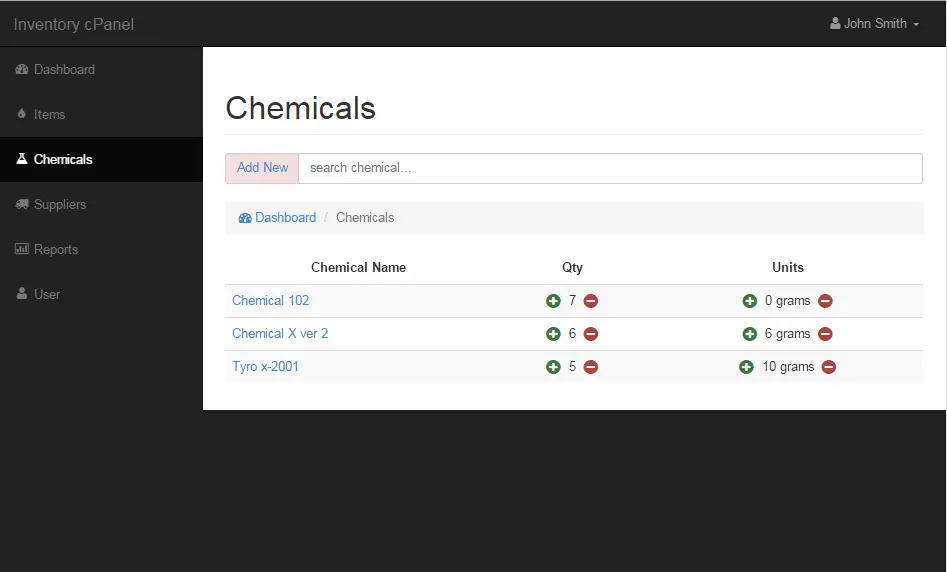Data Flow Diagram (DFD) for Social Networking Application
Design
This is the phase wherein the researchers had converted the description of all the requirements during analysis into logical and then into physical system specifications. In here, the website elements had been designed together with the content elements and the overall layout of the system. After integrating the overall design of system elements such as pictures, font, colors, etc., the researchers had produced a wireframe of the system that was followed prior to the system development.
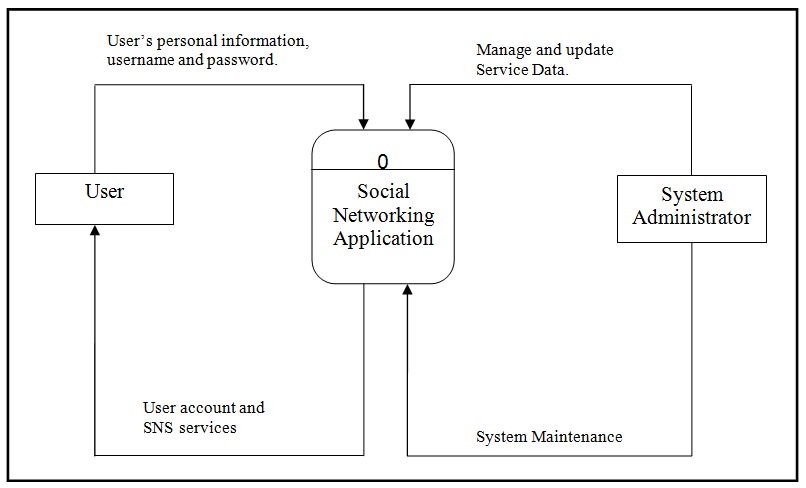
Context Diagram of Social Networking Application
The context diagram shows three sources of data within the system: the User(s), Social Networking Application, and System Admin. Users provide information as input, the system generates all information and services as output to the users.
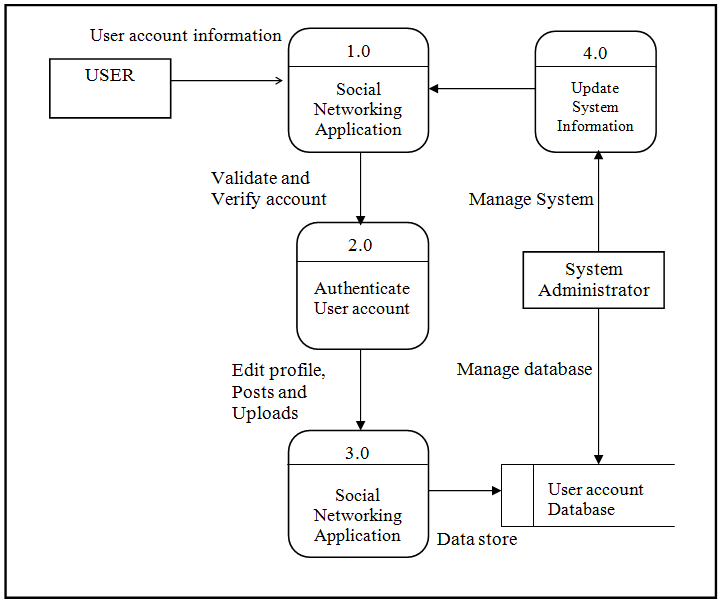
Data Flow Diagram of Social Networking Application
This diagram represents the Social Networking Application major processes, data flow and data stores. There are three streams or flows of data. The user information input for registration is being stored in user account database.
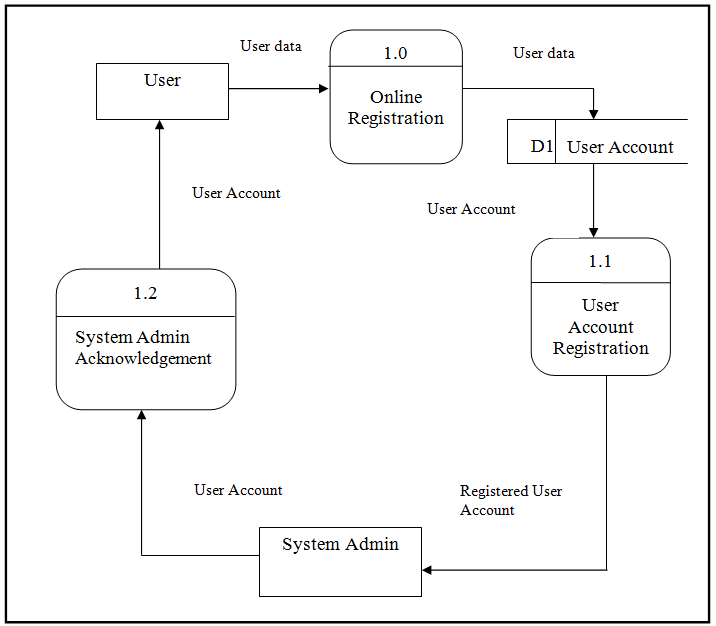
DFD Explosion Online Registration of Social Networking Application
This diagram shows the decomposition process 1.0 online registration from level 0 diagram of Social Networking Application. The user will register online. Once the user is registered, the System Admin has the authority to verify and update all user account being entered.

DFD Explosion Online Services of Social Networking Application
This diagram shows the decomposition process 2.0 the Online Services. The user can use the services of Social Networking Application like chat: sending messages in real time upload images and files. The user can also manage his/ her profile.
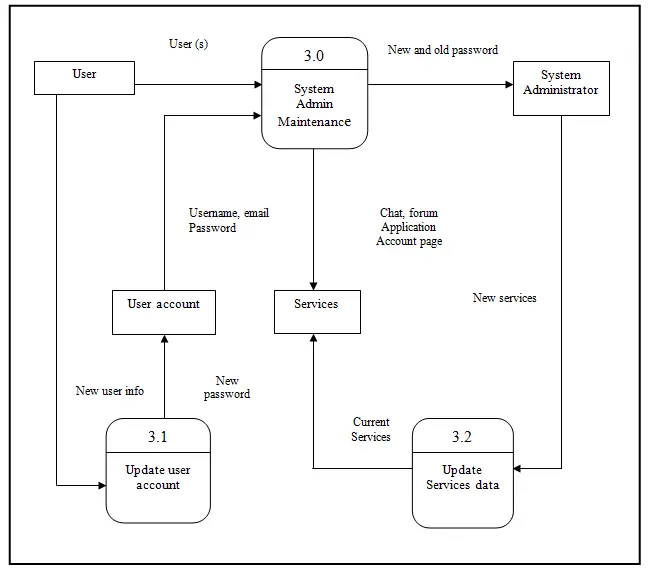
DFD Explosion Online System Admin of Social Networking Application
This diagram shows the decomposition process 3.0 which is System Admin Maintenance. The system administrator is responsible to update the user account and services then, acknowledge all the changes of the user to his/ her own profile or account.
Development
In this phase, the systems specifications had been turned into a working system. The creation of content summary started the system development, it was then followed by the establishment of content details, creation of detailed content of the system, development of pages and links, development of functionalities and then the content integration, in which the community began to function for the reason that interaction features such as registration, media uploading, posting comments, message exchange, etc., has been build up.
People ware and Job Responsibilities
Project Manager – Supervises and monitors the entire project activities and its development.
System Analyst – Responsible for researching, planning and recommending software and system choices to meet an organization’s business requirements.
Web Programmer – Creates the source codes for the development of system.
Researcher – Further researches on the content and other studies related to current system being develop.
Network Administrator – Maintains and manages the table entries of files; the user accounts; and backup the system.
Initial testing
The researchers used the McCalls Software Quality Model during the initial testing of the developed Social Networking Application. The system was rated according to the following software quality criteria: Audibility, the ease with which conformance to standards can be checked. Accuracy, communication commonality, completeness, consistency, controllability, observability, data commonality, decomposability, error tolerance, execution, efficiency, expandability, generality, hardware independence, instrumentation, operability, security, self-documentation, simplicity, software system independence, traceability and training.
Final Testing
Final testing of system was done through user acceptance testing evaluation, an evaluation criteria that includes information in the program as to whether information used was clear and concise, if the content was free from spelling and grammatical errors, if the information was based on observe data that are current and valid, if updated information was distributed promptly. Another criteria was user interaction which has the purpose of finding out if the system was well defined, if the system organization was clear, logical and effective, if the language used in the system was clear to intended user, if the user can operate the system independently, if the system acknowledge yes user’s input, if the user can operate the system independently, if the system acknowledges user input, if the system was attracted and interesting and the system achieves its purpose. Then the last criteria was the technical aspects of the software and material that includes the computer capabilities such as graphics, color or sound if it was used appropriately, if the system was reliable, if updates can be loaded easily into the system and if the data provided was secured and confidential.
Credits to the authors
You may visit our facebook page for more information, inquiries and comments.
Hire our team to do the project.
